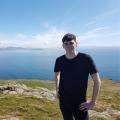THE Scottish Government has been urged to resolve a dispute arising from an energy firm’s plans to build a hydroelectric power plant next to the site of a 17th century Highland massacre.
Glen Hydro submitted plans for a river hydro scheme on land near the site of the Glencoe massacre in Ballachulish.
But Iain Thornber, deputy Lord Lieutenant of Inverness-shire, has called for a public inquiry.
He said: “For a glen known across the world for the infamous and high profile historic massacre – part of which occurred within the boundary of the proposed development area – I find it both astonishing and appalling that the applicant [and] the developer imagined this to be unnecessary.
“For this reason alone the application should be rejected or referred to the Scottish Government and determined by way of a public inquiry.”
Thornber added that the proposals would cause a significant disturbance to wildlife including rare wildcats.
Plans have been submitted to the Highland Council for a hydro scheme near the massacre site – including a turbine house, intake, buried pipelines, outfall, and access tracks.
The proposed turbine location is less than 200 yards from the ruins of Inveriggin House – where nine members of the MacDonald clan were killed in 1692.
In an objection to the Glen Hydro plans, resident Peter Weir said: “The proposed Hydro scheme does not respect the historic area of Glencoe including the site of the Inveriggin ruin where many people were murdered in the massacre.
“The proposed scheme will also affect tourism because tourism depends on the beauty of the natural environment and will greatly alter the environment and the economy.”
Scottish National Heritage said it had no objections with the application and stressed that it would not have an adverse impact on the site.
The National Trust for Scotland stated that it was “scrutinising” the application.
Residents also claim that they only found out about the plans this week and vented their anger at the firm during a community meeting with Glen Hydro on Wednesday.
In response, Nick Forrest, senior project developer for Vento Ludens Ltd, which owns Glen Hydro, said: “The location of the ruin at Inveriggan was a significant consideration in selecting the turbine house site, 150m away on the opposite side of the Inveriggan Burn.
“A house stood very close to the turbine house site until the mid-1970s, and the turbine house will be slightly further from the public footpath.
“The turbine house will not change the current setting of the Inveriggan ruin.
“While our hydro sites are designed as sensitively as the site allows, and the construction area is restored as closely as possible to its original state, it is understandable that some individuals will have concerns about the overall impacts.”
Forrest added that there was no intention to keep information from residents about the scheme.
The massacre on February 13, 1692, saw a total of 38 members of the MacDonald clan of Glencoe murdered by government troops led by Robert Campbell of Glenlyon.
The slaying followed a Jacobite uprising in the Highlands with many clans defying orders to pledge support to King William II.
The murders were carried out across the glen at MacDonald settlements after the clan chief failed to meet a deadline to state his allegiance to the king.
It came after a proclamation was issued in August 1691 which required the chiefs of the Scottish clans to take an oath of allegiance to William III before the end of the year.
Alasdair MacDonald of Glencoe, known as Maclain, missed the deadline by a few days, providing the authorities with an opportunity to crush his clan.
This opportunity was noticed by Scotland’s Secretary of State, John Dalrymple.
He had a particular dislike for the MacDonalds of Glencoe and Maclain’s failure to sign the oath on time gave him the perfect pretext for action.
Campbell’s soliders arrived at Glencoe 12 days before the massacre. They claimed they were friends who were seeking shelter due to the fact that their fort was full. The MacDonalds honoured the Highland hospitality code and gave the soldiers quarter in their own houses.
On the night of February 12, Campbell’s troops begun systematically killing 38 people after they received signed orders.






Why are you making commenting on The National only available to subscribers?
We know there are thousands of National readers who want to debate, argue and go back and forth in the comments section of our stories. We’ve got the most informed readers in Scotland, asking each other the big questions about the future of our country.
Unfortunately, though, these important debates are being spoiled by a vocal minority of trolls who aren’t really interested in the issues, try to derail the conversations, register under fake names, and post vile abuse.
So that’s why we’ve decided to make the ability to comment only available to our paying subscribers. That way, all the trolls who post abuse on our website will have to pay if they want to join the debate – and risk a permanent ban from the account that they subscribe with.
The conversation will go back to what it should be about – people who care passionately about the issues, but disagree constructively on what we should do about them. Let’s get that debate started!
Callum Baird, Editor of The National
Comments: Our rules
We want our comments to be a lively and valuable part of our community - a place where readers can debate and engage with the most important local issues. The ability to comment on our stories is a privilege, not a right, however, and that privilege may be withdrawn if it is abused or misused.
Please report any comments that break our rules.
Read the rules hereLast Updated:
Report this comment Cancel